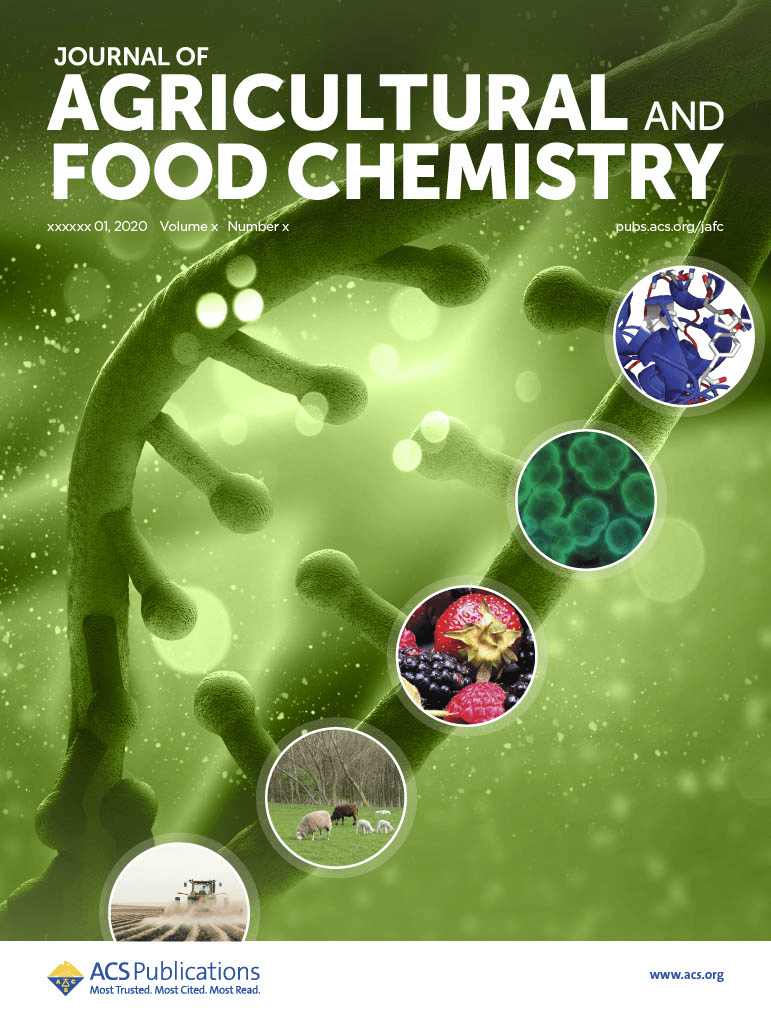This award recognizes outstanding research work in the areas of agrochemicals and food chemistry. Learn more about the 2022 awardees and read their winning research articles.

The Journal of Agricultural and Food Chemistry (JAFC) and the ACS Divisions of Agrochemicals (AGRO) and Agricultural and Food Chemistry (AGFD) are delighted to announce the winners of the 2022 Journal of Agricultural and Food Chemistry Research Article of the Year Award. Launched in 2013, this award annually recognizes outstanding research work in the areas of agrochemicals and food chemistry with the support of the ACS Division of Agrochemicals and Division of Agricultural and Food Chemistry.
Congratulations to this year’s award recipients! The awards will be presented at ACS Fall 2022. Each award consists of an honorarium, a plaque, and travel expenses to attend the ACS National Meeting and present their research.
Winner of the AGFD Division Best Research Article:
Unraveling the Ergot Alkaloid and Indole Diterpenoid Metabolome in the Claviceps purpurea Species Complex Using LC–HRMS/MS Diagnostic Fragmentation Filtering
DOI: 10.1021/acs.jafc.1c01973
By: Silvio Uhlig, Oscar Daniel Rangel-Huerta, Hege H. Divon, Elin Rolén, Kari Pauchon, Mark W. Sumarah, Trude Vrålstad, and Justin B. Renaud

This research article describes an approach to evaluate the diversity of ergot alkaloids and indole diterpenoids and other important biochemical contaminants present in cereal grains using UHPLC-HRMS, molecular biology methods, statistics, and chemical profiling procedures. The data could be used to set up allowable maximum levels of ergot alkaloids in grain and cereal products.
Winner of the AGRO Division Best Research Article:
Dysregulation of ClpP by Small-Molecule Activators Used Against Xanthomonas oryzae pv. oryzae Infections
DOI: 10.1021/acs.jafc.1c01470
By: Teng Yang, Tao Zhang, Xiang Zhou, Pengyu Wang, Jianhua Gan, Baoan Song, Song Yang, and Cai-Guang Yang

Xanthomonas oryzae pv. oryzae (Xoo) causes rice bacterial leaf blight disease. Caseinolytic protease P (ClpP) is highly conserved in the majority of bacterial species and plays a central role in protein quality control by degrading misfolded proteins. In this research article the authors determined the crystal structure of XooClpP and demonstrated a new mode of action of ClpP activators against Xoo to prevent rice bacterial leaf blight.
Accepting the Research Article of the Year Award (AGFD Division) on behalf of all co-authors: Dr. Silvio Uhlig

Dr. Silvio Uhlig is a chemist and senior researcher at the Chemistry and Toxinology Research Group at Norwegian Veterinary Institute in Ås, Norway, which works broadly on different topics within toxin chemistry as well as the biology of toxin-producing organisms. He is especially interested in applying modern analytical chemistry techniques in a toxicological or biological context, such as chemotaxonomy or bioassay-guided isolation.
Accepting the Research Article of the Year Award (AGRO Division) on behalf of all co-authors: Dr. Song Yang and Dr. Cai-Guang Yang

Dr. Song Yang is Full Professor at the Key Laboratory of Green Pesticide and Agricultural Bioengineering, Ministry of Education of China, Guizhou University. He leads the Green Pesticide and Molecular Target Discovery research group and focuses on the discovery of new agrochemical lead compounds as well as their molecular targets, and the development of green pesticides targeting agricultural bacterial and fungal disease.

Dr. Cai-Guang Yang is Full Professor at the State Key Laboratory of Drug Research and the Center for Chemical Biology at Shanghai Institute of Materia Medica, Chinese Academy of Sciences. Since 2020, he has been an Adjunct Professor at School of Pharmaceutical Science and Technology, Hangzhou Institute for Advanced Study, University of Chinese Academy of Sciences. He leads the Chemical Biology based Drug Discovery research group and focuses on the development and application of chemical probes for functional intervention of untargeted proteins.
Previous Award-Winning Papers:
2021
Quantitative Dietary Fingerprinting (QDF)—A Novel Tool for Comprehensive Dietary Assessment Based on Urinary Nutrimetabolomics
DOI: 10.1021/acs.jafc.8b07023
***
Evaluation of Matrix Effects and Extraction Efficiencies of LC–MS/MS Methods as the Essential Part for Proper Validation of Multiclass Contaminants in Complex Feed
DOI: 10.1021/acs.jafc.9b07706
2020
3-Chloro-5-trifluoromethylpyridine-2-carboxylic acid, a Metabolite of the Fungicide Fluopyram, Causes Growth Disorder in Vitis vinifera
DOI: 10.1021/acs.jafc.8b05567
***
Transglycosylation Forms Novel Glycoside Ethyl α‑Maltoside and Ethyl α‑Isomaltoside in Sake during the Brewing Process by α‑Glucosidase A of Aspergillus oryzae
DOI: 10.1021/acs.jafc.9b06936
2019
Bioactivity-Guided Metabolite Profiling of Feijoa (Acca sellowiana) Cultivars Identifies 4-Cyclopentene-1,3-dione as a Potent Antifungal Inhibitor of Chitin Synthesis
DOI: 10.1021/acs.jafc.7b06154
***
Yeast Metabolites of Glycated Amino Acids in Beer
DOI: 10.1021/acs.jafc.8b01329
2018
Identification of the Ubiquitous Antioxidant Tripeptide Glutathione as a Fruit Fly Semiochemical
DOI: 10.1021/acs.jafc.7b03164
***
A Search for CD36 Ligands from Flavor Volatiles in Foods with an Aldehyde Moiety: Identification of Saturated Aliphatic Aldehydes with 9–16 Carbon Atoms as Potential Ligands of the Receptor
DOI: 10.1021/acs.jafc.7b01890
2017
Quantitation of Aristolochic Acids in Corn, Wheat Grain, and Soil Samples Collected in Serbia: Identifying a Novel Exposure Pathway in the Etiology of Balkan Endemic Nephropathy
DOI: 10.1021/acs.jafc.6b02203
***
Toxicologically Relevant Aldehydes Produced during the Frying Process Are Trapped by Food Phenolics
DOI: 10.1021/acs.jafc.6b02165
2016
Oxyphytosterols as Active Ingredients in Wheat Bran Suppress Human Colon Cancer Cell Growth: Identification, Chemical Synthesis, and Biological Evaluation
DOI: 10.1021/jf506361r
***
Olfactory Cues from Different Plant Species in Host Selection by Female Pea Moths
DOI: 10.1021/jf505934q
2015
NMR-Based Metabolomic Investigation of Bioactivity of Chemical Constituents in Black Raspberry (Rubus occidentalis L.) Fruit Extracts
DOI: 10.1021/jf404998k
***
Identification of Plant Metabolites of Environmental Contaminants by UPLC-QToF-MS: The in Vitro Metabolism of Triclosan in Horseradish
DOI: 10.1021/jf404784q
2014
Different Phenolic Compounds Activate Distinct Human Bitter Taste Receptors
DOI: 10.1021/jf304198k
***
Antifungal Activity against Plant Pathogens of Metabolites from the Endophytic Fungus Cladosporium cladosporioides
DOI: 10.1021/jf400212y
2013
Identifying New Lignin Bioengineering Targets: Impact of Epicatechin, Quercetin Glycoside, and Gallate Derivatives on the Lignification and Fermentation of Maize Cell Walls
DOI: 10.1021/jf203986a
***
Human Psychometric and Taste Receptor Responses to Steviol Glycosides
DOI: 10.1021/jf301297n
